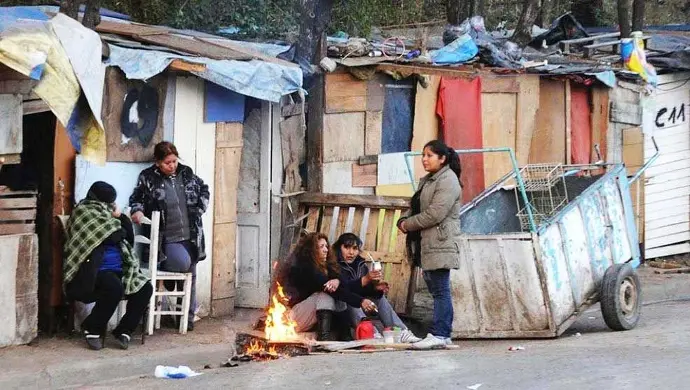Absolute poverty
Absolute poverty refers to a measure of poverty in which people are below an established minimum resource threshold, based on uniform criteria. Absolute poverty, in this sense, establishes uniform criteria to designate those people who are in a situation of poverty that can be objectively quantifiable. Thus, absolute poverty establishes a criterion based on a minimum income, which (based on some estimates) allows the individual or family to have a decent life, as well as access to the most basic services. In this way, anyone who is below the minimum income is considered a person in poverty.
As with other measurements, there are criticisms of the concept. The way of measuring poverty uniformly for the entire planet offers a vision that does not fit reality. To this end, absolute poverty usually alternates, in its measurement, with relative poverty.
Criticisms of the concept of absolute poverty
Absolute poverty is a much more reliable measure of poverty than relative poverty. Well, this, unlike the relative one, takes as its base measurement criterion a series of basic resources that allow a dignified life. Any person who is below these resources, based on absolute measurement, would be in a situation of poverty.
However, like relative poverty, absolute poverty also has flaws. In this sense, errors that occur again, depending on the place where the analysis is carried out. Absolute poverty tries to equalize poverty in the world, establishing a minimum daily income for the development of a dignified life. However, depending on the territory we are referring to, we are talking about how these thresholds should undergo modifications. Therefore, although absolute poverty presents greater objectivity in its measurement, it continues to show a series of nuanced aspects in its objective of presenting uniformity in all territories.
Difference between absolute poverty and relative poverty
Thus, absolute poverty was born with the objective of alleviating a problem presented by relative poverty. While absolute poverty uses criteria that establish a certain level of access to resources as a border between poverty and non-poverty, relative poverty establishes it, as its name indicates, based on a threshold that is considered by local analysis. That is, a threshold that is calculated based on the income levels that occur in the territory.
In this way, relative poverty uses a different type of measurement that does not necessarily adapt to reality. In this context, let's imagine relative poverty in a place where all citizens have a salary of 50 euros/month. According to the system used to measure relative poverty, such poverty would be non-existent. And, since everyone has the same level of income, there are no people who are relatively poorer than others.
In the same way, suppose that we live in a city in which all citizens have income levels greater than one million euros, leaving a series of people who, for their work, receive a salary worth half a million. In this sense, if everyone had an annual income of one million euros and these others had half a million, relative poverty would be found in those who receive half a million euros; despite the fact that, in real practice, there are no poor people in the territory.
So, the difference lies mainly in that. Well, as the two examples shown show, relative poverty quantifies poverty, taking into account the context in which said measurement occurs. Unlike absolute poverty, it includes poverty which, as its name indicates, is poverty relative to the level of income received in the territory. However, he does not understand quantities and objectivity.

 IHRO NEWS
IHRO NEWS

